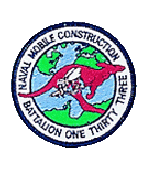Learn More About the Navy Seabees and Their Exploits







World War II
Convinced that war was coming, the U.S. Navy realized that fighting in theaters halfway around the world would present new challenges in logistics and would require a vast infrastructure. Beginning in 1940, they began a program of building bases on far-flung Pacific islands using civilian contractors. When the United States officially entered the war, the use of civilian labor had to stop. Under international law, civilians were not permitted to resist enemy military attacks. If they did, they could be executed as guerrillas.
Korea
On June 25, 1950, North Korea attacked South Korea. This civil war was greatly expanded when the United States, and later China, entered the conflict. In Korea, as in World War II, the "Can Do" spirit shone again. CBC Davisville was reestablished on August 8, 1951.
Landing at Inchon, Seabees provided pontoon causeways within hours of the initial assault. Seabees served side by side with the Marine Corps and the Army, building and defending what they built.
Antarctica
Beginning in 1955, Seabees began deploying yearly to the continent of Antarctica. As participants in Operation "Deep Freeze," their mission was to build and expand scientific bases located on the frozen continent. The first "wintering over" party included 200 Seabees who distinguished themselves by constructing a 6,000-foot ice runway on McMurdo Sound. Despite a blizzard that once destroyed the entire project, the airstrip was completed in time for the advance party of Deep Freeze II to become the first to arrive at the South Pole by plane.
Vietnam
The Seabees numbered 10,000 men in May of 1965 when MCB-10 went across the beach at Chu Lai, Republic of Vietnam. During the peak of the Vietnam conflict, Seabee's strength reached 25,000 men in 22 battalions, two regiments, two maintenance units, and scores of Civic Action Teams.
Beirut
In 1982, responding to civil war in Lebanon, the U.S. Marines went in as part of an international peacekeeping force. On October 23, 1983, a truck loaded with explosives crashed through the security perimeter of the Marine Barracks and exploded. Two hundred forty-one were killed and 80 seriously wounded. In November, a 42-man Seabee detail from Mobile Construction Battalion ONE was ordered to Beirut to build underground bunkers for the Marines. The detail was quickly enlarged to 82 men. There was no serious retaliation from the Americans, and the civil war escalated. On February 7, 1984, President Reagan ordered a withdrawal from Lebanon.
Seabees Today OIF/OEF
From the island-hopping of World War II, the cold of Korea, the steaming jungles of Vietnam, the deserts of the Middle East, Seabees continue to play a major role in the Global War on Terrorism. In support of Operation Enduring Freedom, Seabees repaired runway facilities at Camp Rhino and Kandahar in Afghanistan. Twenty-six Seabee units were deployed to Kuwait and Iraq in support of Operation Iraqi Freedom, and 16 Seabees were killed. The construction of multiple 20-acre aircraft-parking aprons, munitions storage areas, a 48,000-square-foot concrete pad, bridges, a 1,200-person camp, and repaired various roads have been proven invaluable to coalition forces.
